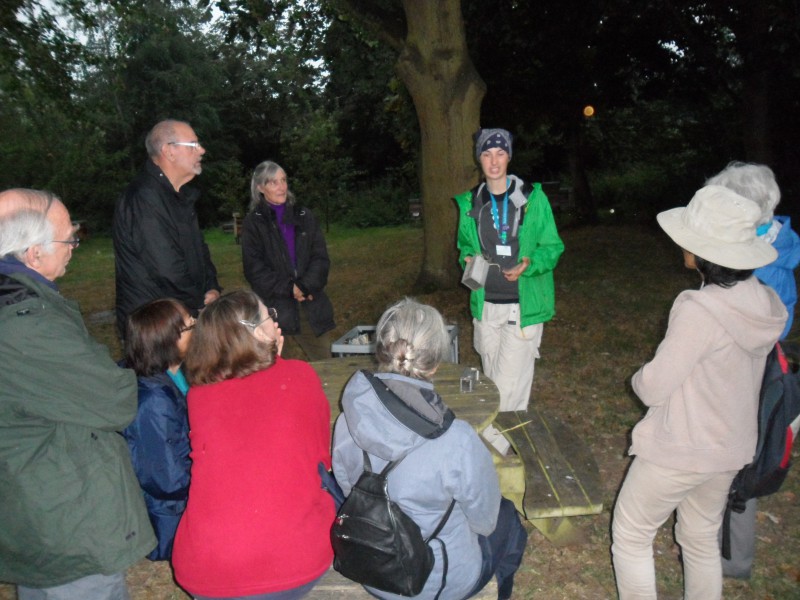Last Friday, 2nd September, we organised a mini “BioBlitz” at the Harrow Beekeepers’ apiary site, in Hatch End. The apiary is quite a small but diverse site – if you’ve taken the train north from Harrow you may well have seen it, tucked away behind Morrison’s car park. It’s bordered not only by the railway line, but by playing fields, gardens and the River Pinn (which gives Pinner its name). It has small grassy areas, mature trees, river banks, hedges and shrubs. But we’ve often wondered just exactly what lives there besides the bees.
So a BioBlitz was planned – getting lots of people involved, looking really closely at the full biodiversity of the site, and recording as much nature as they could in just a quick snapshot. We decided that in order to get a picture of the mammals on site, we’d need to be sneaky and set some traps overnight. So on Friday evening a small group of us convened to lay a dozen small mammal traps – very kindly loaned for the weekend by the Field Studies Council. One of their field studies tutors, our very own Rowena, came along and explained in detail what sort of creatures we might find and how the traps worked. They’re humane traps that leave the animals unharmed to be released the next day – seems at the FSC some animals get “trap happy” – they offer free food and dry bedding! Then everyone placed a trap in spot they thought might be popular with our furry friends.
But that was just part one of the evening. Rowena went on to give us a really interesting introduction to bats… we know there are bats around, people have caught glimpses of them recently. We learned that around 1 in every 4 mammals on earth is a bat – quite amazing for these creatures of the night that we barely interact with. We learned about bats’ echo-locating senses, and about the bat detector devices that allow us to hear the bats’ squeaks even though they’re above our hearing range. (Rowena also demonstrated a range of high pitch sounds to put our ears to the test). Then, with the detector on, we very quickly picked up their sounds. Heading just outside the apiary, we could hear their calls as they navigated, found and homed in on their flying insect prey. We could see, in the very last of the daylight, a couple of bats flying around very low over us, and by the frequency of their calls learned that they were “Soprano” Pipistrellus pygmaeus (so-called because their call frequency is somewhat higher than the slightly more common Pipistrellus pipistrellus). The pipistrelles are Britain’s smallest bat.
As the last of the light faded, the rain came down – but we’d set our traps, seen our bats and it was time to go anyway.
Huge thanks to Rowena and the Field Studies Council for loan of equipment. It was obviously much enjoyed because one of the BioBlitzers purchased their own bat detector that very night…!

Rowena explains to the group how the traps are baited and triggered, and what types of animal we might catch in them
More to come, including what we found in the traps next day, in the next post!
